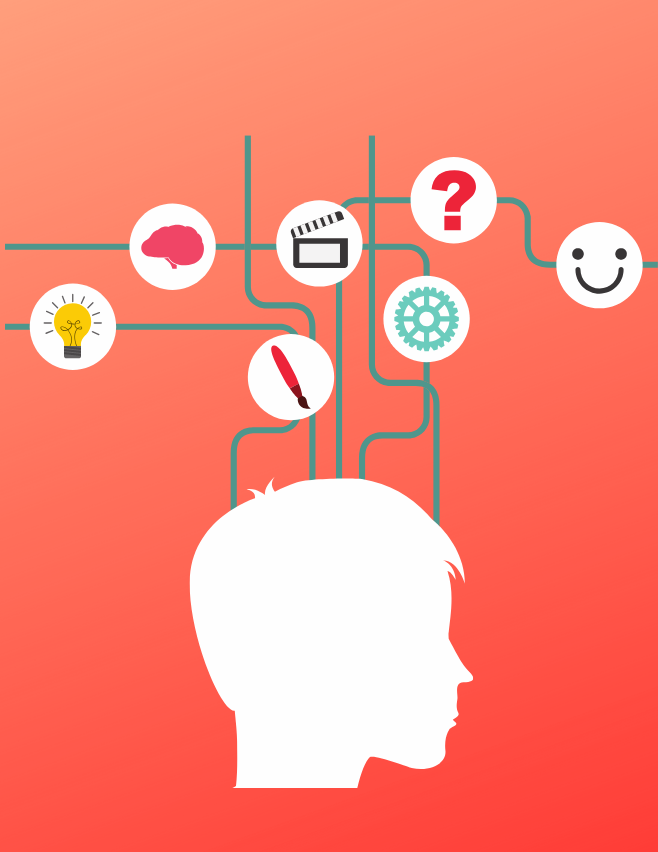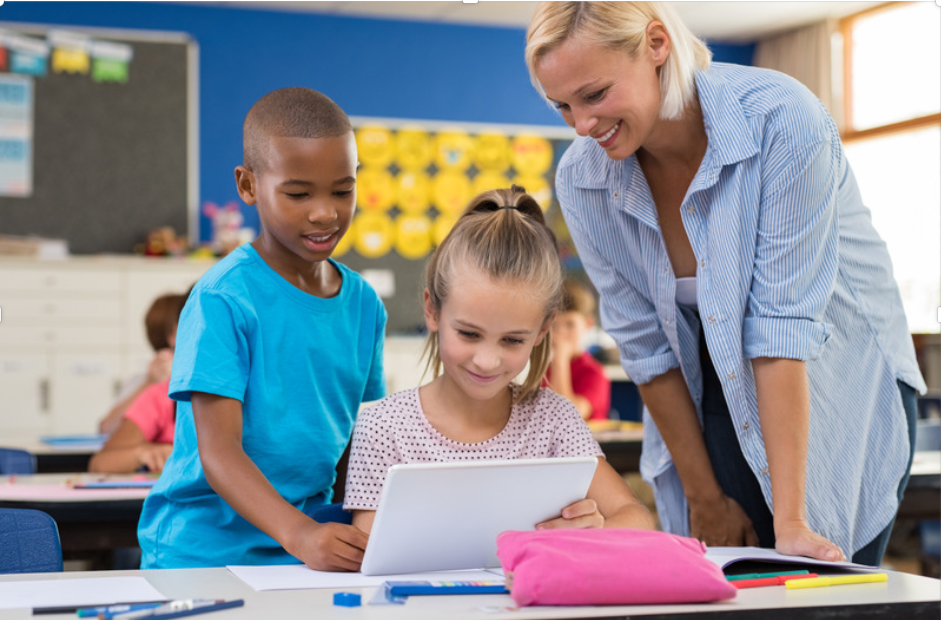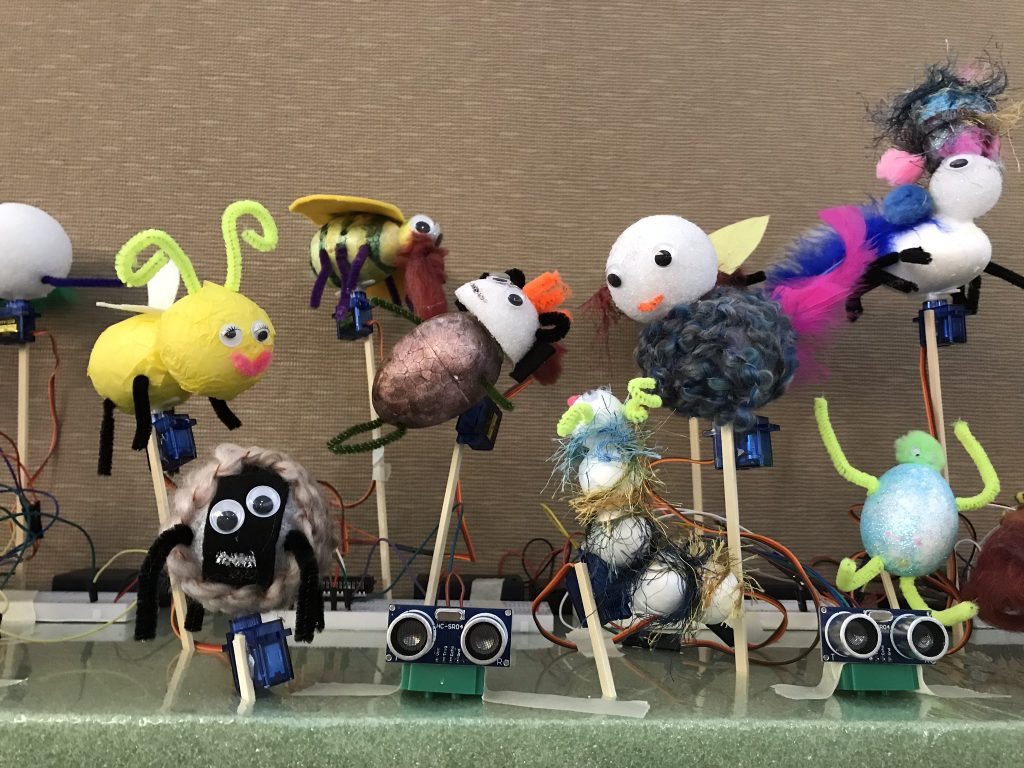In chapter 4 of The Adaptive School (2016), Garmston and Wellman describe seven norms that are essential to group collaboration: pausing, paraphrasing, posing questions, putting ideas on the table, providing data, paying attention to yourself and others, and presuming good intent. I planned to focus on the seven norms in this post, but after reading chapter 4 more closely, I realized that the success of these norms relies on individual group members being able to monitor their own thinking and behavior. So instead, I chose to focus on the four “group member capabilities” (Figure 1) identified by the authors that underlie the seven norms of collaboration.
Continue reading “A Starting Point for Effective Coaching Sessions”Author: admin
Coaching for Computer Science Integration
My job is to teach elementary computer science and technology classes and when appropriate, help my students’ classroom teachers integrate tech into their classes. Though I am not a technology coach, many of the skills I need to do my job effectively are the same that are required in coaching: building relationships, listening to teacher’s concerns and goals, and understanding how school and district level expectations effect technology and computer science integration at the classroom level.
Continue reading “Coaching for Computer Science Integration”Community Engagement Project: Pair Programming in K-8
For my Digital Learning Environments Community Engagement project, I chose to develop a workshop on Pair Programming in K-8 classrooms. I picked this topic because I am excited by the research behind pair programming and its potential for making students, and in particular girls, feel more engaged and confident in computer science classes.
Continue reading “Community Engagement Project: Pair Programming in K-8”Building Independent Learners
As any parent or teacher knows, children learn best when they solve problems on their own. In this week’s module of our class Digital Learning Environments, I chose to look at how ISTE Coaching Standard 3e, which calls for troubleshooting “basic software, hardware, and connectivity problems common in digital learning environments,” could be applied in K-5 elementary Technology and Computer Science classes. In this post I wanted to not only find digital tools that could support this standard, but more importantly, understand best practices for helping students solve problems they encounter when learning to code or use various software or hardware devices.
Continue reading “Building Independent Learners”Accessible & Adaptable Computer Science Instruction

As Computer Science becomes part of K-8 instruction, teachers will need to adapt lessons to make them accessible to students with a broad range of physical, learning and neurological abilities. In the current module of our class, “Digital Learning Environments,” I wanted to examine how the ISTE Standard for Coaches 3, indicator d, “Select, evaluate, and facilitate the use of adaptive and assistive technologies to support student learning” (ISTE, 2011) could be applied to teaching Computer Science.
Continue reading “Accessible & Adaptable Computer Science Instruction”Social Coding: Engaging Girls in K-8 Computer Science
Getty Images Pro, via Canva.
In module 1 of our DEL program class Digital Learning Environments, we are looking at ISTE Coaching Standard 3 “Technology coaches create and support effective digital age learning environments to maximize the learning of all students” (ISTE, 2011).
In this post I would like to explore how teachers can promote collaboration and cultural relevance in K-8 Computer Science lessons to increase girls’ interest in coding, addressing indicator a: “Model effective classroom management and collaborative learning strategies to maximize teacher and student use of digital tools and resources and access to technology-rich learning environments” (ISTE, 2011).
Continue reading “Social Coding: Engaging Girls in K-8 Computer Science”Digital Classroom Commons

Online classroom spaces that enable students and teachers to interact in creative and adaptive ways are making their way to the K-8 level. Young students can use these spaces to access differentiated lessons and show their understanding in ways that were never possible in traditional classroom settings.
Continue reading “Digital Classroom Commons”Physical Computing

Physical computing – programming small microcomputers and combining them with electrical and non-electrical materials – engages students in ways that coding alone doesn’t. Intangible onscreen code suddenly makes something happen in the real world: a wheel turns, a light goes on, a point is scored and displayed above the soccer game you’ve built. In the process, students collaborate, solve real world problems and see for themselves how the devices we use in our daily lives really work.
Continue reading “Physical Computing”Technology and Culturally Responsive Teaching
In the current module of our class Teaching, Learning, and Assessment 2, we are focusing on ISTE Educator Standards 5, “Designer” and 7, “Analyst.” I wanted to investigate how technology can support culturally responsive teaching by giving students alternative ways to share their backgrounds and learning, and by providing access to information and viewpoints that are outside those contained in textbooks and other traditional academic resources.
Continue reading “Technology and Culturally Responsive Teaching”Neuroscience and Learning
With advances in brain imaging, neuroscientists can observe what happens in students’ brains in the moment of learning. As a result, neuroscience and education researchers are collaborating in ways that benefit both disciplines and may have far reaching effects in how students are taught.